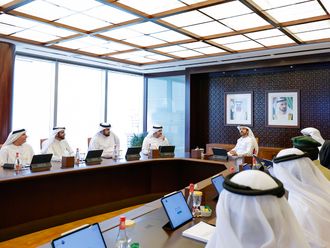Abu Dhabi: The recently completed first soil map of the UAE will help decision-makers, farmers and developers to identify land for suitable purposes. It will even help the police use the soil for forensic evidence, officials said in Abu Dhabi on Wednesday.
Abu Dhabi Police have already been using the Abu Dhabi soil map for forensic evidence in criminal investigations, they said.
With traces of soil on any objects used for committing a crime or on the clothes of criminals or victims, the police can unearth further information of the crime by making forensic lab tests of soil with the help of the map, the officials said.
Abu Dhabi Food Control Authority and Farmers Service Centre have also started using the map for farm development in the emirate.
Urban Planning Council of Abu Dhabi has been using the map for developmental projects.
The countrywide map was completed using the two-year soil survey of the Northern Emirates conducted by the Environment Agency, Abu Dhabi, together with the UAE Ministry of Environment and Water (MOEW).
The project produced a national soil map of the UAE, by compiling results from this survey, the soil survey of Abu Dhabi Emirate which was completed in 2010, and the soil map of Dubai which was developed in 2003.
Razan Khalifa Al Mubarak, secretary-general of EAD, said: “Our environment, being in an arid zone, faces many challenges. Of these, the degradation of our land and natural resources poses the biggest threat to a sustainable environment. Mitigating this threat requires the knowledge of our soils — the underlying fabric of life,” she said.
The survey was funded by the Executive Council of Abu Dhabi Emirate, said Darryl Lew, executive director of the Environment Quality Sector at EAD.
A total of 65,000 observation sites have been fully described, classified and populated to the comprehensive database of the results, said Mahmoud Abdul Fattah, deputy manager of soil and land use management at EAD.
Additionally, various thematic maps, such as irrigated farming suitability, soil salinity, current land use, land degradation, vegetation are also included, he said.
His system is internet-based and accessible via EAD’s corporate website www.ead.ae.












